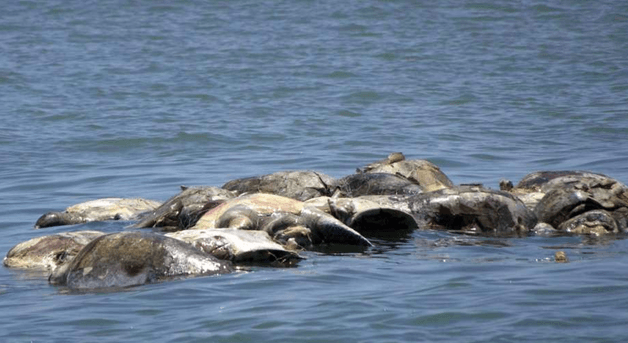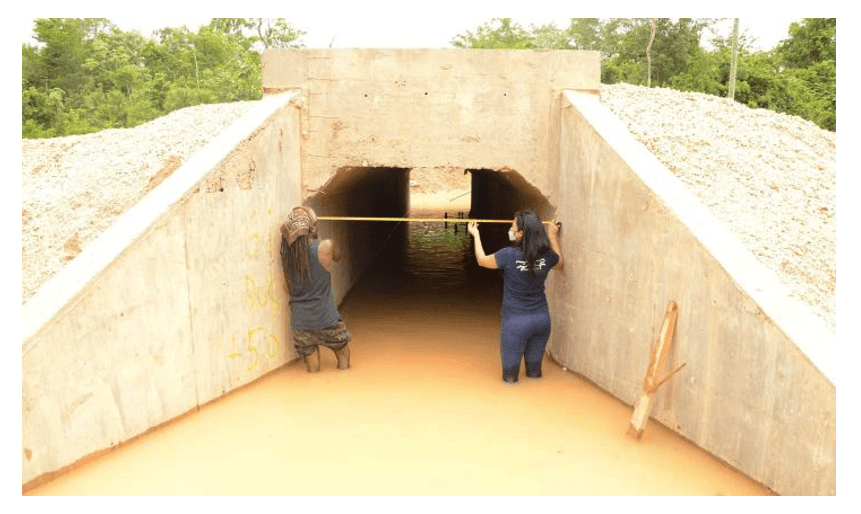Stephen Corry has worked for Survival International since 1972 and has been its Director since 1984. Survival International exists to protect tribal peoples from annihilation and to give them a platform to speak to the world.
www.survivalinternational.org/
24th February 2020
This article by Stephen Corry is more general and less Central America specific than most of the material included in this website. We have selected it for inclusion here because of the cogency of its arguments, its relevance to protected area management and conservation in any region of the world and its exposure of the destructive role of the Big International Conservation NGOs. It also exposes the myth that palm oil plantations (which have taken over large tracts of Central American land) are in any way beneficial to wildlife and biodiversity. The article first appeared in the CounterPunch journal. We are grateful to Stephen Corry and Survival International for permission to reproduce the article here.
Key words: conservation; climate change; protected areas; biodiversity loss; plantations; land theft; ‘New Deal for Nature’; community managed forests.
*************
The conservation industry says 2020 is its ‘super year.’[1] It wants to set aside thirty percent of the globe for wildlife, and divert billions of dollars away from reducing climate change and into ‘natural climate solutions.’[2] This would be a disaster for people and planet. Conservation was founded in the racist ideology of 1860s USA but it committed thirty years ago to becoming people-friendly. It hasn’t happened. There will be more promises now, if only to placate critics and funders like the U.S. and German governments, and the European Commission, which are paying for conservation’s land theft, murder and torture.[3] More promises will be meaningless. No more public money should go for ‘Protected Areas’ until the conservation bodies recognize their crimes, get rid of those responsible, and hand stolen lands back, with compensation. Conservation NGOs must also stop cozying up to mining, logging, oil, and plantation companies.
The latest idea to be heavily promoted by big conservation NGOs is doubling the world’s so-called ‘Protected Areas’ (PAs) so that they cover thirty percent of the globe’s lands and oceans. This is now their main rallying cry and response to two of the world’s biggest problems – climate chaos and loss of biodiversity. It sounds good: It’s easy to grasp and has numbers that are supposed to be measurable, and advertisers do love numbers.
What better answer to climate change and biodiversity loss than to ban human ‘interference’ over huge areas? If, that is, you think ‘everybody’ is guilty of causing both crises and that everything’s solved by keeping them away. The idea’s been around for years, but now governments and industries are promoting it to the tune of billions of dollars,[4] so it’ll be difficult to oppose. But it’s actually dangerous nonsense which would have exactly the reverse effect to what we’re told, and if we want to save our world, it must be stopped.
Let’s be clear that cutting destructive pollution globally is vital for the climate, and that stopping industrial exploitation of unspoiled areas is essential for the flora and fauna, and the physical and mental health of inhabitants and visitors. None of that is disputed, but these are not the arguments advanced for asserting the right of this ‘New Deal for Nature’ to more taxpayers’ cash. It’s a marketing gimmick designed to funnel even more money to those who have for decades demonstrated their failure to mitigate either climate change or biodiversity loss.
Let’s assume they did succeed in putting so much territory ‘out of bounds.’ As with the emperor in his new suit, it’s childishly obvious that this wouldn’t necessarily bring any reduction to climate chaos: That’s simply because it wouldn’t affect what happens in the remaining seventy percent of the world – where most pollution originates. If just as much pollution carries on outside, then it doesn’t matter what’s going on inside PAs, because they too depend on the world’s climate, and you can’t fence the wind. Without reducing industrial emissions globally, leaving existing forest intact or planting lots of trees just won’t be enough to solve the problem. Wreck the atmosphere – even from a tiny proportion of the Earth – and you wreck it everywhere.
Not for the first time, the ‘experts’ are promoting a policy which a child can see is senseless, but if they tell a lie big enough and keep repeating it, people will eventually come to believe it.
What about the second claim, that more PAs are needed to ensure the protection of biodiversity? Everyone rightly wants more of that: The more diverse an ecosystem, the more likely it is to adapt and survive. ‘Biodiversity’ means the enormous variety of life, and life forms are interconnected: they depend on each other. Where the flora and fauna is reduced to just a few species, there’s a domino effect that cuts the number still further.[5]
However obvious, it merits restating: to mix metaphors, when the domino becomes a snowball effect then ecosystems become deserts, even when visibly green. Oil palm plantations carved out of tropical forests are a famous example of lots of trees being planted in an area where biodiversity has been slashed to just a few species. Such plantations are effectively ‘green deserts.’
Putting the propaganda aside, it’s impossible to determine scientifically how effective PAs are for enhancing biodiversity. For example, a line drawn around a highly biodiverse area, which is then declared a national park, proves nothing about the park: The biodiversity was there in the first place. There is, however, considerable agreement about one thing, and it’s not that PAs are the solution at all.
It turns out that the most diversity is not found in areas where all human interference is banned, but actually the reverse – it’s found in places where tribal, indigenous, and other local, communities have stayed put and carried on doing what they’ve always been doing. It’s simply not true that everyone shares responsibility for biodiversity loss. Studies show that community-managed forests have less deforestation than inside PAs, and that ‘nature’ is doing better in areas managed by indigenous peoples than elsewhere.[6] In places as different as Australia, Brazil, and Canada more diversity is found in indigenous territories than in PAs.[7] It seems clear that biological and human diversity are interlinked.
This is a key point which conservation NGOs haven’t wanted the public to know as they clamor for yet more cash: Areas managed by local people, especially if they’re indigenous, are much better than PAs imposed by outsiders. One study concluded, albeit limply, the “notion that indigenous reserves are less effective than parks… must be re-examined.”[8] You can say that again! They are already reckoned to contain no less than eighty percent of global species diversity. That’s the very reason conservationists want to take control of them. Indigenous peoples are now being victimized precisely because of their expertise in environmental stewardship.
Even where PAs are hyped as being about preserving iconic species, the evidence is mixed. For example, the former head of a conservation NGO thinks there could be more Indian tigers outside protected areas than inside. No one knows, but what’s certain is that when the British colonizers imprisoned the Waliangulu tribal elephant hunters in 1950s Kenya, elephant numbers did skyrocket, but only to plummet when the next drought hit and the herds proved too numerous for the environment. Thousands died of starvation, restoring a balance that the Waliangulu had achieved for generations or millennia. In South Africa, an average of nearly 600 elephants were culled every year from 1967 to 1996 (without publicity, to avoid upsetting conservation donors).[9] Banning traditional indigenous hunting generally harms biodiversity.
Protecting ‘nature’ by fencing it off from the locals simply hasn’t worked. It doesn’t help that many PAs aren’t really protected at all. They include industrial exploitation – mining, logging, plantations, trophy hunting concessions, or extensive, usually high-end, tourist infrastructure – but that’s the reality. The locals are thrown out as the land is grabbed by one or other industry, partnering with one or other big conservation NGO.
Like it or not, many PAs are as much about stealing the land from local people to make someone else a profit as they are about conservation. The famous Central Kalahari Game Reserve in Botswana is the second largest ‘game reserve’ in the world but it’s also leased to mining exploration. There’s a diamond mine, with its roads and heavy machinery, where a tiny handful of the Bushmen who have lived there for generations are occasionally given menial jobs. (The government kicked them out until forced to backtrack by the high court.) As in almost all African PAs, wealthy tourists enjoy luxury accommodation inside the reserve. The man responsible for both the tourism and mine was the former president, General Ian Khama, a much-feted conservationist who was on the board of Conservation International.
This land theft is a problem for us all, and not only because the indigenous people are generally much better conservationists than ‘us’: Not surprisingly, the locals object when their land and self-sufficiency are looted for someone else’s gain, and their need for food, and sometimes their anger, translates into defying hunting bans (making them ‘poachers’ for trying to feed their families), as well as taking action to recover their ancestral territory. For example, pastoralists whose herds are banned from private ‘conservancies’ in East Africa are cutting the fences and going back in. They can be armed and violent clashes are increasing. Some researchers fear increasing bloodshed is inevitable[10] and the increasing militarization of conservation will just make things worse. Yet this is the model touted as the future of PAs, one supposedly enacted with the support of local communities (which is often a lie). They’re supported by the American NGO, The Nature Conservancy, and are largely profit-making investments aimed at wealthy companies and tourists. They’re now taking over huge areas of East Africa and beyond.
Just as Africans extricated themselves (at least, partly!) from European rule in the last century, they are unlikely to accede quietly to what is seen as more colonization, this time by conservationists. Unless things change, PAs in Africa will become real, not metaphorical, battlegrounds. Serious environmentalists know that you can’t have a PA for long if it’s surrounded by an angry population, yet conservation groups seem incapable of changing their practice. They exhort industry to become sustainable, while promoting their own model, which palpably isn’t.
WWF, for example, routinely violates human rights, the law and its own policies. It’s already spent millions of dollars illegally pushing for a new park in Congo, Messok Dja. The money comes from WWF itself and its accomplices, including a logging, oil palm, and luxury tourist company, as well as the Wildlife Conservation Society, the U.S. government, the EU, and the UN. As with the creation of almost all African PAs, the first step has been to kick out and terrorize the local Baka (so-called Pygmies) who’ve probably lived there for thousands of years, and who have adapted and sustainably managed their biodiverse-rich environment. Now they are kept out of their ancestral lands and terrorized, beaten and arrested if they return to seek traditional foods or plant medicines.
This is what the thirty percent of the globe taken for the New Deal for Nature will look like – a third of the globe stolen for profit. It’s a new colonialism, the world’s biggest land grab, supposedly ‘green’ and supposedly to save the world – a really big lie. As Odette, a Baka woman from Congo, says of such imposed conservation projects which don’t work, “We’ve had enough of this talk of ‘boundaries’ in the forest. The forest is ours.”[11]
The last couple of generations have amply demonstrated that meetings of corporate heads, NGOs, politicians, and celebrities are not going to solve the crises of climate and biodiversity. Those attending are amongst the major contributors to the problems, and least willing to accept any change which might threaten their position. They argue over statements that no one actually applies, or even intends to, and which are replete with clauses ensuring ‘business as usual.’ The meetings and declarations attract an enormous media circus, but are akin to the emperor’s workshop, with hundreds of tailors busily cutting suits of such rarefied material that they don’t cover his nakedness.
The real answers to the crises of climate and biodiversity lie in an inversion of the current approach, and a rejection of the New Deal for Nature and its failure to understand the relationship between indigenous peoples and nature. If we really want to save our world, then we have to start with the rich cutting their massive overconsumption. The wealthiest ten percent cause about half the world’s total pollution,[12] so they must work hardest to cut it. Both military conflict and the growth of information technology must be seen as the major polluters they are. The first is barely mentioned in climate activism, and the plan for the second is the exact opposite of what’s needed, with yet more energy-hungry ‘artificial intelligence’ lined up to monitor our lives for the benefit of industry and state control.[13] If we’re going to reduce dependence on fossil fuels, we must also reduce dependence on ‘smart’ tech, and we must accept the fact that real solutions aren’t found in marketing gimmicks like ‘net zero,’ offsetting, carbon markets, or ‘pricing nature.’ Real solutions are found with the local peoples that have successfully been creating and managing the world’s biodiversity since prehistory.
Humanity as a whole isn’t responsible for these problems, one particular sector is, and it’s same one coming up with the New Deal for Nature. Those promoting it want to dictate how the rest of the world should live, but they’re acting primarily for themselves. Banning human activity from yet more so-called ‘Protected Areas’ is another manifestation of the hubris that got us into this mess in the first place. Local people – those who retain some self-sufficiency, common sense, and connection with their environment – remain the strongest backbone of humanity, even today. They have better answers than the conservation technocrats and other global elites who lack their perspective. Kicking even more of them out at best reduces them to landless poverty and at worst destroys them and the environment. It would be disastrous for everyone.
We should be respecting land rights and encouraging indigenous peoples and other local communities to remain where they are – if they wish – to carry on managing their lands in their own ways, and we must, above all, stop the theft of their territories for conservation. Those who want to, should be maintaining their self-sufficiency, not forced into global markets that profit the polluters more than anyone. We must ‘give’ them back previously stolen lands, to manage themselves. We must listen to them rather than destroying them, as we are now.
Whether this happens remains to be seen. The few voices pointing out that the emperor has no clothes at all, are up against a deafening scream from conservation propagandists and mainstream media, baying that the New Deal for Nature is the perfect solution. Whose voice will prevail depends on people’s gullibility and ability to challenge both their own prejudices and powerful vested interests. It’s a real battle, and the outcome will determine how much more nature is stolen from this beautiful world we have helped create.
References
1) WWF Ecological. ‘2020: let’s put nature top of everybody’s to-do list.‘ Ecological.panda.org. April 20, 2018. (accessed 13/02/2020) ↑
2) Tollefson, Jeff. ‘Global deal for nature’ fleshed out with specific conservation goals.’ Nature, April 19, 2019. (accessed 13/02/2020) ↑
3) Baker, Katie & Tom Warren. ‘The US Government Spent Millions Funding WWF-Backed Forces Accused Of Torture and Murder.’ Buzzfeed News, September 24, 2019. (accessed 13/02/2020); Baker, Katie & Tom Warren. ‘WWF Says Indigenous People Want This Park. An Internal Report Says Some Fear Forest Ranger ‘Repression.’ Buzzfeed News, March 8, 2019. (accessed 13/02/2020) ↑
4) The estimate for the total global ecosystem services in 2011 is $125 trillion/yr
Costanza, Robert, Rudolf De Groot, Paul Sutton, Sander Van der Ploeg, Sharolyn J. Anderson, Ida Kubiszewski, Stephen Farber, and R. Kerry Turner. ‘Changes in the global value of ecosystem services.‘ Global environmental change 26 (2014): 152-158. (accessed 13/02/2020) ↑
5) Carrington, Damian. ‘What is biodiversity and why does it matter to us?‘ The Guardian, March 12, 2018. (accessed 13/02/2020) ↑
6) Porter-Bolland, Luciana, Edward A. Ellis, Manuel R. Guariguata, Isabel Ruiz-Mallén, Simoneta Negrete-Yankelevich, and Victoria Reyes-García. ‘Community managed forests and forest protected areas: An assessment of their conservation effectiveness across the tropics.’ Forest ecology and management 268 (2012): 6-17 ↑
7) The study measured vertebrate animal diversity only.
Schuster et al, 2019, Vertebrate biodiversity on indigenous-managed lands in Australia, Brazil, and Canada equals that in protected areas, Environmental Science & Policy Volume 101, November 2019, Pages 1-6 ↑
8) Woods Hole Research Center. ‘Satellites Show Amazon Parks, Indigenous Reserves Stop Forest Clearing.’ ScienceDaily. www.sciencedaily.com/releases/2006/01/060126200147.htm (accessed February 13, 2020). ↑
9) Dickson, Paul, and William M. Adams. ‘Science and uncertainty in South Africa’s elephant culling debate.’ Environment and Planning C: Government and Policy 27, no. 1 (2009): 110-123. ↑
10) Letiwa, Paul. ‘Herders protest as wildlife conservancies drive them out.’ The Daily Nation, August 18, 2019. (accessed February 13, 2020). ↑
11) Survival International. ‘We’ve had enough of this talk of ‘boundaries’ in the forest.’ YouTube video, 01:00. 4 Jan 2019. (accessed February 13, 2020). ↑
12) Gore, Timothy. Extreme Carbon Inequality. London: Oxfam. Dec 2, 2015. (The report can be found in Spanish and French at https://www.oxfam.org/en/research/extreme-carbon-inequality) (accessed February 13, 2020). ↑
13) See: Lu, Donna. ‘Creating an AI can be five times worse for the planet than a car.’ New Scientist, June 6, 2019. (accessed February 13, 2020).
14) Berners-Lee, Mike and Duncan Clark. ‘What’s the carbon footprint of … email?‘ The Guardian, Oct 21, 2010. (accessed February 13, 2020). ↑
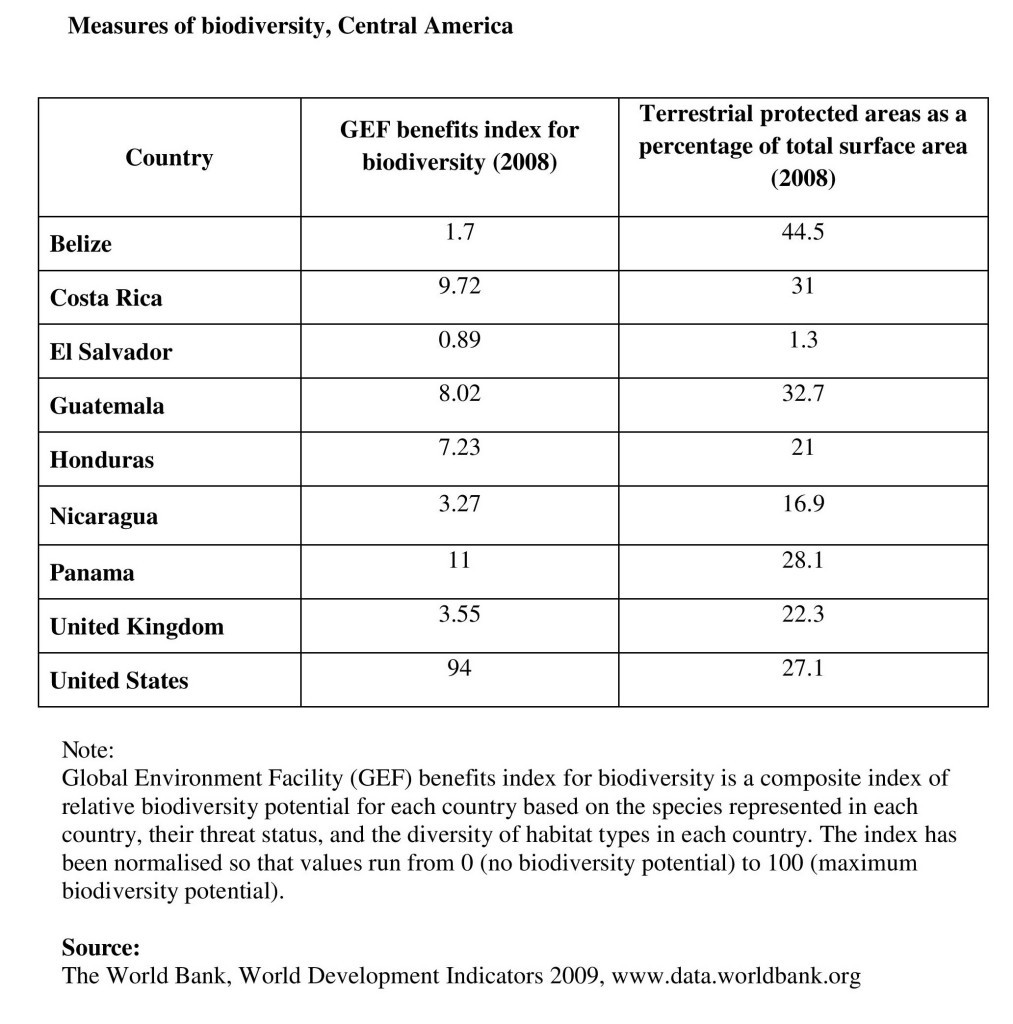
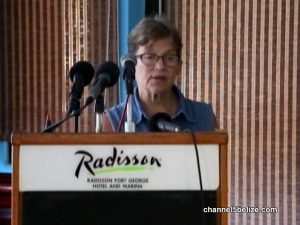 scathing in her evaluation, and told News Five that recent projects have shown that developers have a definite impact on the decisions made by the Department of the Environment.
scathing in her evaluation, and told News Five that recent projects have shown that developers have a definite impact on the decisions made by the Department of the Environment.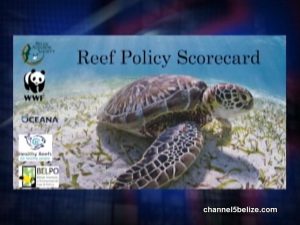 Today, various entities dedicated to the important work of preserving and protecting our natural heritage presented what they are calling a reef scorecard. It’s all about getting Belize’s Barrier Reef System off the World Heritage Site’s endangered list, where it has languished since 2009. So is enough being done to ensure that happens anytime soon? News Five’s Mike Rudon attended G.O.B.’s report card day and has the story.
Today, various entities dedicated to the important work of preserving and protecting our natural heritage presented what they are calling a reef scorecard. It’s all about getting Belize’s Barrier Reef System off the World Heritage Site’s endangered list, where it has languished since 2009. So is enough being done to ensure that happens anytime soon? News Five’s Mike Rudon attended G.O.B.’s report card day and has the story.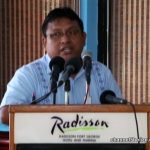 “What we are doing here today is to look at what needs to be done to get the Belize Barrier Reef System off the endangered list and also to ensure that it is a healthy and functioning resource. The indicators of this score card are based on the exact same indicators that are included in the desired state of conservation report that the World Heritage Committee and UNESCO gave to the government. So this is a report that outlines all of the indicators and issues that the government must address in order for it to be reinstated.”
“What we are doing here today is to look at what needs to be done to get the Belize Barrier Reef System off the endangered list and also to ensure that it is a healthy and functioning resource. The indicators of this score card are based on the exact same indicators that are included in the desired state of conservation report that the World Heritage Committee and UNESCO gave to the government. So this is a report that outlines all of the indicators and issues that the government must address in order for it to be reinstated.” “Roughly eighty-five percent of our exclusive economic zone and our territorial waters would be vulnerable to offshore oil activity if the moratorium was ever lifted, and that really is the key takeaway for where we are on oil that there is pressing need for us to get the moratorium formalized for the government to outline the specific conditions under which that moratorium would be lifted and that is why we have come concerns regarding progress.”
“Roughly eighty-five percent of our exclusive economic zone and our territorial waters would be vulnerable to offshore oil activity if the moratorium was ever lifted, and that really is the key takeaway for where we are on oil that there is pressing need for us to get the moratorium formalized for the government to outline the specific conditions under which that moratorium would be lifted and that is why we have come concerns regarding progress.”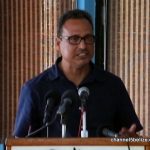 “We have to be able to catalog and recognize the areas that are sensitive in terms of our fishing industry, our tourism industry and in terms of shoreline protection. There is little to no incentive for development to maintain mangroves intact and so we need to revisit that and see how we can improve that.”
“We have to be able to catalog and recognize the areas that are sensitive in terms of our fishing industry, our tourism industry and in terms of shoreline protection. There is little to no incentive for development to maintain mangroves intact and so we need to revisit that and see how we can improve that.”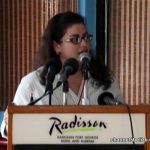 “Yes, we have mentioned the Integrated Coastal Zone management Plan and the fact that that policy is now Cabinet endorsed, but it’s difficult to enforce it, so it needs some kind of legal teeth. What we really were recommending is that within the World Heritage Site that there is an Act or a Bill that can guide development. That was one of the triggers that actually led to our inscription on the endangered list, because we had development within some of the more pristine sites within our World Heritage.”
“Yes, we have mentioned the Integrated Coastal Zone management Plan and the fact that that policy is now Cabinet endorsed, but it’s difficult to enforce it, so it needs some kind of legal teeth. What we really were recommending is that within the World Heritage Site that there is an Act or a Bill that can guide development. That was one of the triggers that actually led to our inscription on the endangered list, because we had development within some of the more pristine sites within our World Heritage.”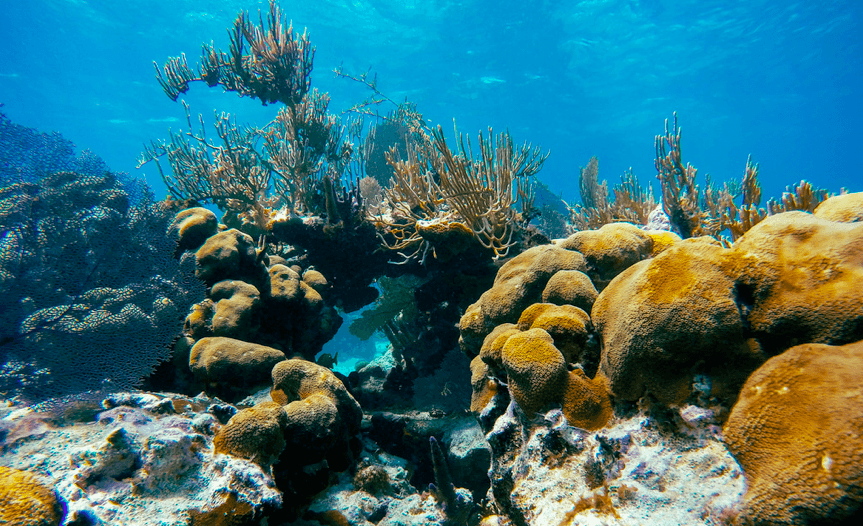
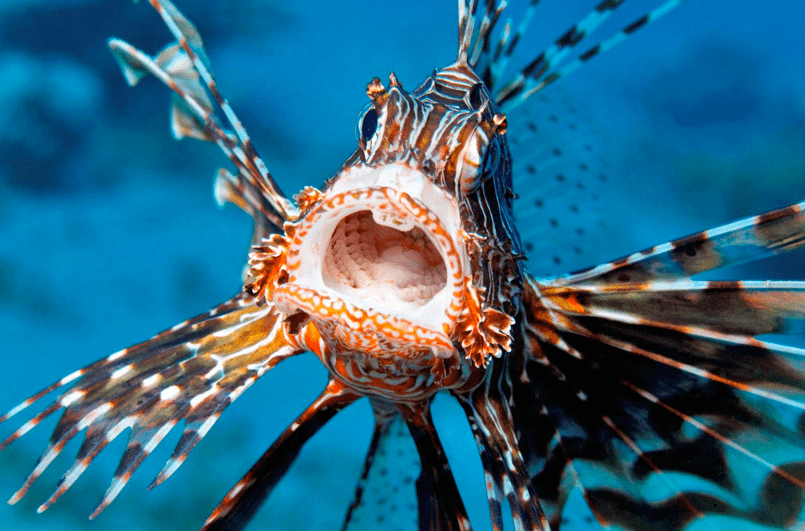
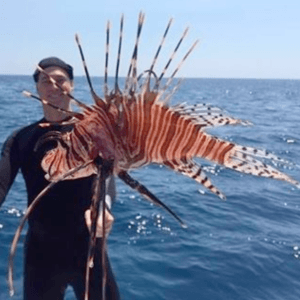 A paper by Cobián-Rojas and Schmitter-Soto (2018 in the International Journal of Tropical Biology) reports on the results of research with the title given above. The two protected marine areas in which the study was carried out were the Guanahacabibes National Park (Cuba) and the Xcalak Coral Reefs (Quintana Roo, Mexico); and the study carried out visual censuses of fish species in coral reef habitats during both dry and rainy seasons in 2013 to 2015.
A paper by Cobián-Rojas and Schmitter-Soto (2018 in the International Journal of Tropical Biology) reports on the results of research with the title given above. The two protected marine areas in which the study was carried out were the Guanahacabibes National Park (Cuba) and the Xcalak Coral Reefs (Quintana Roo, Mexico); and the study carried out visual censuses of fish species in coral reef habitats during both dry and rainy seasons in 2013 to 2015.